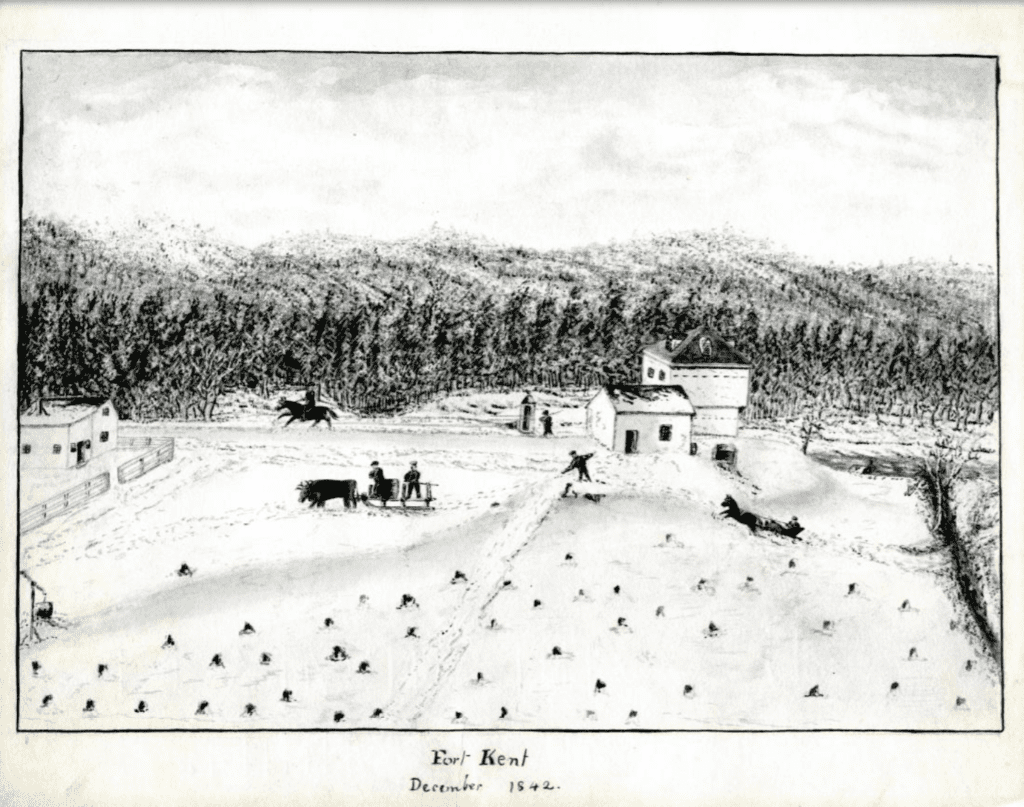The Aroostook War was a bloodless conflict between the US state of Maine and the British Canadian province of New Brunswick. The war started in 1838 and ended by the following year. But did you know what happened in the Battle of Caribou?
In the Battle of Caribou, neither the US nor Canada lost troops in combat. But two armed Canadian lumberjacks were injured by bears.
The Madawaska and John Baker
Tall Trees, Tough Men author Robert Pike described the Aroostook War as beginning when Maine carted a couple of brass cannon up north to shoot at Canadians stealing Maine timber.
The problem began when the Treaty of Paris ended the American Revolution but left the border between Maine, then a district, and the Canadian province of New Brunswick ambiguous.
The Treaty of Ghent, which ended the War of 1812, did not resolve the boundary. The British needed the tall pines along the St. John River for the navy’s masts, so war seemed unavoidable. However, the Americans also had a voracious appetite for lumber.
The disputed land was known as Madawaska, and French people settled it. The French disliked the British because they pushed them out of their land in Nova Scotia. They were known as Les Brayons and farmed peacefully.
The lumbermen caused all the havoc by competing for the best stands of trees. In 1817, a settler named John Baker from Kennebec arrived in Madawaska with his family. He became known as the Washington of the Republic of Madawaska.
Baker pursued his land rights as an American, and after Maine became a state in 1820, he obtained a land grant north of the St. John River.
On July 4, 1827, he hoisted a homemade flag embroidered with an American eagle above six stars by his wife, Sophronia. Baker declared the Madawaska Republic to be an American republic. He hosted a party in Baker-Brook, New Brunswick, with Les Brayons and a French fiddler.
On August 10, 1827, John Baker declared American Aroostook Independence Day. New Brunswick ordered Baker to remove the flag. When he refused, he was arrested and taken to a Fredericton jail. His wife hoisted another homemade flag as soon as he left her sight.
Madawaska then formed a government led by John Baker and chose Pierre Lizotte, a Brayon, to represent them. Lizotte wisely declined the award because New Brunswick officials arrested, tried, and convicted voters. (Source: New England History)
The Aroostook War and Peace
Newspapers dispatched war correspondents to the front, and Maine militiamen practiced shooting at Queen Victoria effigies. One of the few casualties of the war was a farmer who wandered onto the firing range. Another soldier died from measles.
During the Aroostook War, no one was killed in battle. Because of their light uniforms, the soldiers marching through the snow were cold. This was compensated for with thick red shirts and pea-green coats.
According to one local legend, a New Brunswick lumber camp cook and his large girlfriend wandered over to the American fort one day and found it deserted. The Americans fled because the girlfriend was wearing a red dress, and they assumed the Redcoats were on their way.
The United States diplomacy General Winfield Scott and New Brunswick Lieutenant Governor John Harvey prevented bloodshed. The two men became friends when Scott was imprisoned under Harvey during the War of 1812.
The Webster-Ashburton Treaty, negotiated by Daniel Webster and Lord Ashburton, ended the Aroostook War and resolved other border issues between the United States and Canada. (Source: New England History)
Image from
